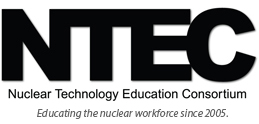N06: Reactor Materials & Lifetime Behaviour
This unit aims to:
- Introduce the key materials employed in nuclear environments, the reasons for their choice and their relevant physical/chemical/mechanical characteristics.
- Provide a review of basic materials concepts concerning the structure and behaviour of metals, including corrosion and degradation of structural materials.
- Review factors (composition, processing, heat-treatments) that affect the performance of metals and alloys.
- Explain the behaviour of materials in the nuclear environment, considering mechanical factors and environmental factors.
- Review the behaviour and degradation of materials in a nuclear environment over the lifetime of the plant or equipment.
Brief description of the unit
The unit examines materials used in nuclear power plants, the particular requirements of the nuclear environment and the effects of this environment on these materials over their lifetime. The topics covered include: materials science, uses of different materials, environmental degradation (corrosion and degradation), lifetime issues, pressure vessel materials and welds, graphite moderation; materials specification and fabrication for high reliability in aggressive environments, irradiation effects, nuclear fuels, fuel cladding and graphite.
Intended Learning Outcomes
| Demonstrate a basic understanding of the principles of materials science and materials degradation/corrosion. |
| Demonstrate a thorough understanding of the principal materials employed in a nuclear plant and the reasons for their choice in each application. |
| Show knowledge of the factors to be taken into account when specifying materials for nuclear related use. |
| Assess structural integrity for a cracked component using the structural integrity assessment |
| Understand the effect of microstructure and mechanisms of degradation for nuclear materials. |
| Demonstrate an understanding of the material and plant operational factors influencing the long-term behaviour and characteristics of such materials. |
